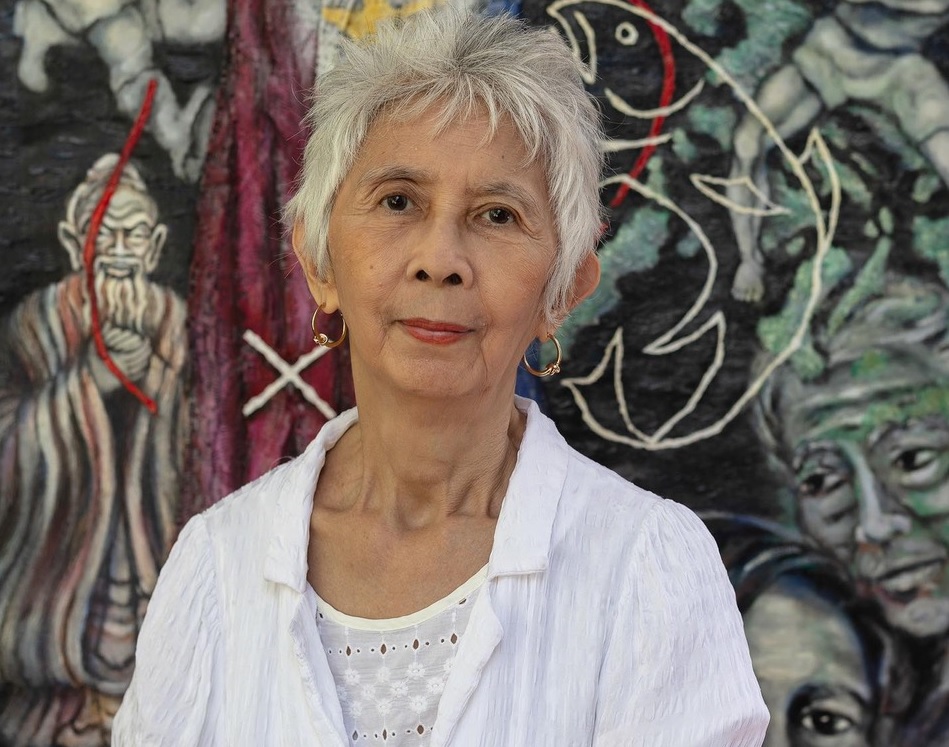

Imelda Cajipe-Endaya’s inaugural exhibit Rigodon presents her early abstract prints at Silverlens Galleries until May 25, 2024.
The term rigodon refers to a formal dance during the Spanish colonial era, Rigodon de Honor that has evolved into another layered meaning in Philippine politics, the musical chair of changing political partners at one’s convenience.
Starting as a printmaker in the early 1970s, Cajipe Endaya later switched to oil and acrylic painting. In hindsight, she maintains that printmaking remains her first love, mostly for the challenges it present.
Rigodon
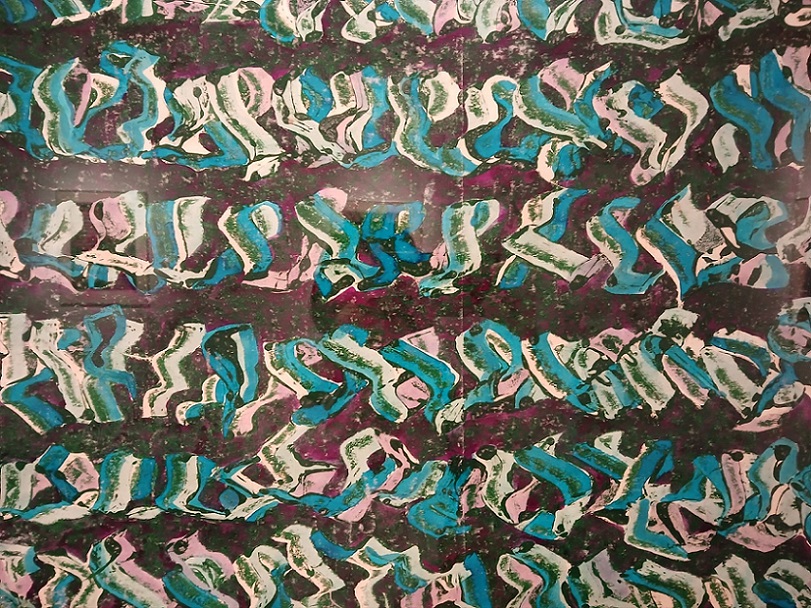

Cajipe Endaya’s prints remain an exploration of artistic sensibility through the language of abstraction that shifts freely from blocks of color, geometric forms, lines and squiggles, and free-flowing shapes. Ultimately, they are based on culture and tradition capturing the essence of Filipino identity.
The prints, in dye resist on oil transfer, have retained their vibrant and fresh colors despite being made 50 years ago.
Kayamanan ng Lupa, 1974: In earth tones of oranges and browns, accentuated with white orbs, and shades of lavender, it calls to mind a vast terrain with hidden flora and fauna as well as minerals waiting to be discovered, maybe or never. But wait, are those barbed wires crisscrossing everywhere? They will strangle and destroy the land.
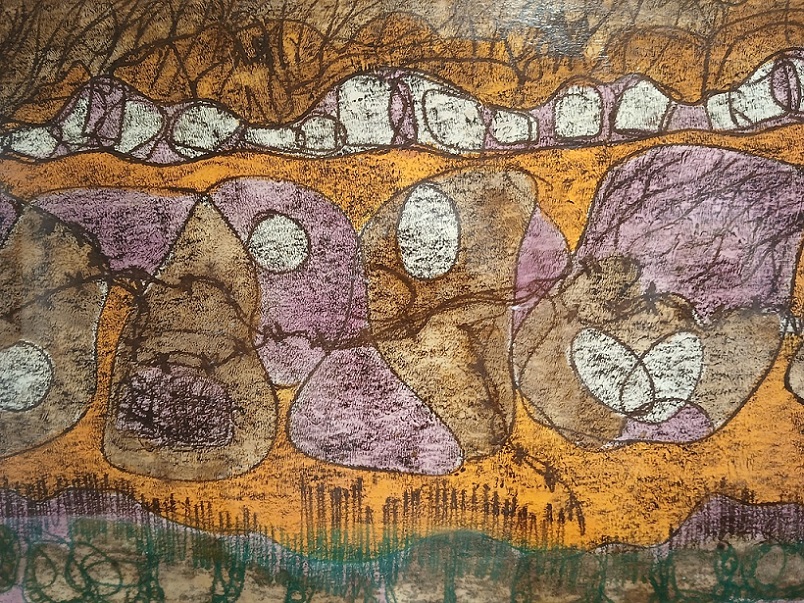

Ube, 1975: Against a deep green background evocative of banana leaves, four groups of rectangles and circles, in lines and squiggles of purple and lavender, with a never-ending loop of regality. For Filipinos, ube connotes purple yam made into halaya, ice cream, or rice cakes, a comfort food forever.
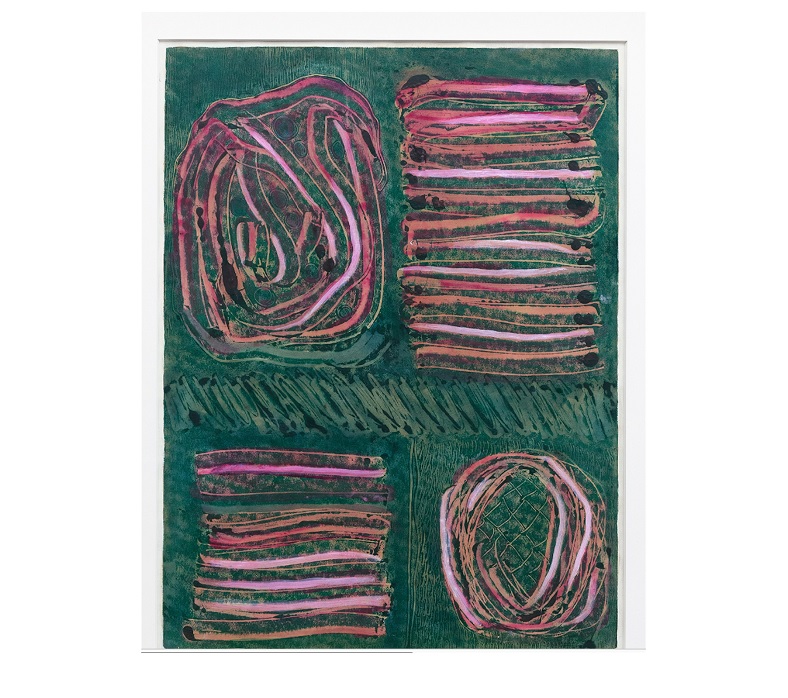

Tugtog ng Banda’y Halu-halo, 1975: a summer filled with merriment and fiestas, the local band is playing in the town plaza, beckoning a crowd. Despite the unforgiving heat, friends and neighbors sway along with the energetic band. The heat is forgotten, momentarily.


Rigodon, 1974: in blues and greens, the title piece presents undulating and swirling figures in motion with their twists and turns, repeated horizontally that gives a mesmerizing effect. Is life but a rigodon?
Prints forever
Cajipe Endaya started as a printmaker in the mid-1970s, early in her art practice. Her works during this period include Mga Ninuno, a series of prints on Filipino identity. Ninuno VIII (1976-1979) is a mix of etchings, mixed media, and serigraphs.
She considers renowned printmaker Ofelia Gelvezon-Tequi (b. 1942), then a young Humanities teacher in U.P., as one of her mentors in printmaking and who had invited her to join a printmaking workshop that introduced her to the medium.
In a 2022 interview (Youtube, Mahica Art), Cajipe Endaya looks back: “I found my heart in printmaking. I saw how it challenged the imagination…”. She also underscored the difficulties in doing etchings, describing it as backbreaking and tedious work, but it was the challenge itself that kept her going.
She mentioned the printmakers who supported and inspired her to continue making prints, intaglio and etching, in particular. Aside from Ofelia, they included Orlando Castrillo, Mang Maning (Manuel Rodriguez Sr), Rudy Samonte, Petite Calaguas, and Brenda Fajardo.
In the same interview, she notes that her favorite medium is etching and aquatint. Quite partial to textures, she strives to have textural effects in her black and gray etchings.
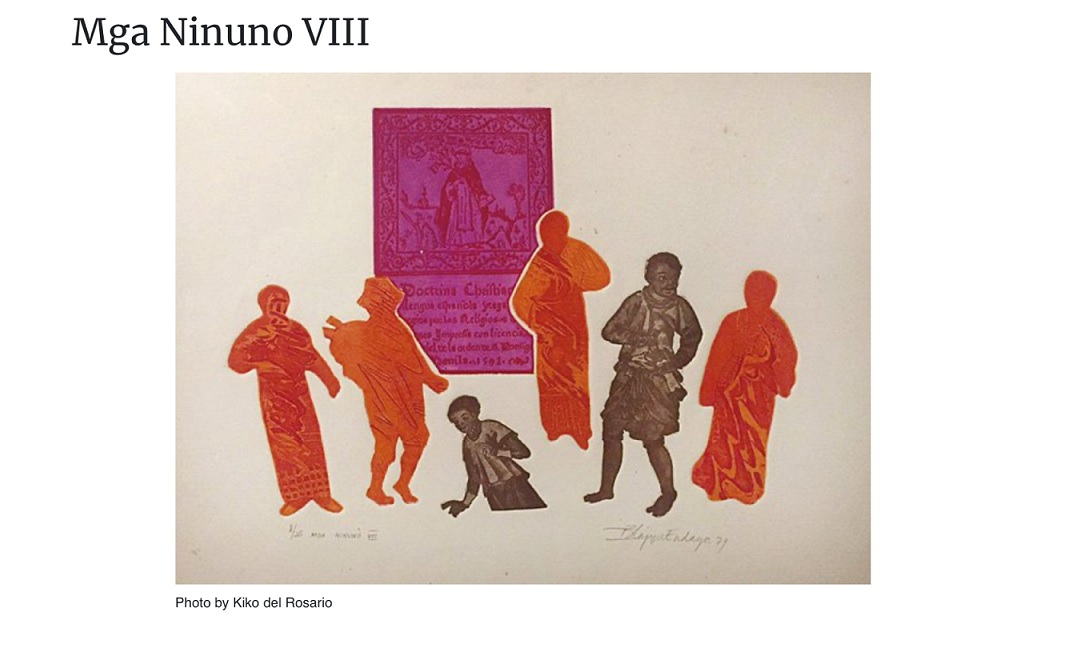

Imelda Cajipe Endaya (b. 1949, Manila)
A painter, printmaker, author, activist, curator, and art project organizer, Imelda Cajipe Endaya is a UP Diliman graduate of fine arts (1970) who majored in advertising art and did further studies in art history and criticism.
Today, she is largely known for her representational style using mixed media and installation works that touch on contemporary social issues, women empowerment, identity and culture, Philippine history, social justice, and the environment.
The Cultural Center of the Philippines (CCP) honored her with a 50-year retrospective (Imelda Cajipe Endaya: Pagtutol at Pag-asa) in 2022 that covers her practice in printmaking, painting, collage, and installation art from the 1960s to the present.
Her mixed media and installation works are richly textured, with layered compositions of crochet, laces, textiles, papier mache, bamboo, wood, and found objects.
She cofounded Kasibulan (Kababaihan sa Sining at Bagong Sibol na Kamalayan), an artist collective; she initiated the publication of Pananaw: Philippine Journal of Visual Arts, and became its first editor.
Among Cajipe Endaya’s awards and recognition include the ff: Gawad Alab ng Sining, Tanglaw ng Sining, UP College of Fine Arts, 2019; Ani ng Dangal, National Commission for Culture and the Arts, 2009; Irwin and Florence Zlowe Memorial Award, Annual Exhibition, American Society of Contemporary Artists, New York, 2008; ALIWW Honors for Women in the Arts, Ateneo de Manila, 2008; Republic of the Philippines Centennial Honors for the Arts, Cultural Center of the Philippines, 1999; CCP Thirteen Artists Award, 1991; and Gold Medal, Printmaking, Art Association of the Philippines, 1979.


